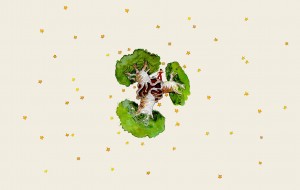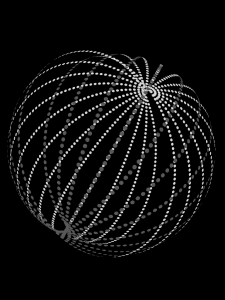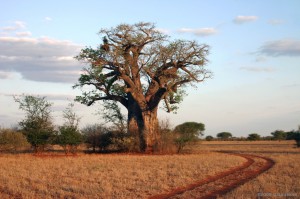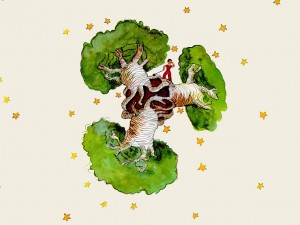



So, as the little prince described it to me, I have made a drawing of that planet. I do not much like to take the tone of a moralist. But the danger of the baobabs is so little understood, and such considerable risks would be run by anyone who might get lost on an asteroid, that for once I am breaking through my reserve. “Children,” I say plainly, “watch out for the baobabs!”
My friends, like myself, have been skirting this danger for a long time, without ever knowing it; and so it is for them that I have worked so hard over this drawing. The lesson which I pass on by this means is worth all the trouble it has cost me.
Perhaps you will ask me, “Why are there no other drawing in this book as magnificent and impressive as this drawing of the baobabs?”
The reply is simple. I have tried. But with the others I have not been successful. When I made the drawing of the baobabs I was carried beyond myself by the inspiring force of urgent necessity.
This is a baobab on Earth:
On the planet of the little prince, this poses the threat of a planetary ecological disaster:
In Antoine de Saint-Exupéry’s The Little Prince and Watts’s The Island, the authors present a profound relationship between scale and ecology. Watts’s Dyson-Sphere organism proposes a model for a species that operates at the scale (in terms of size, energy, computation, etc…) of a massive star, while the Little Prince occupies a world in which a baobab tree is a radical planetary mega-structure. As the territory of architecture continues to expand, one can imagine the role of the designer evolving rapidly to address levels of information and scales previously inaccessible to us. Fundamental architectural questions like, for instance, how an architecture meets the ground, become fundamentally transformed if the designer can engage landscape at the scale of the cell, or deploy intelligent and adaptive building materials. At moments, it requires the relentless enthusiasm of hard SciFi, or the refreshing simplicity of a children’s book, to release us from our intellectual blinders and reveal the questions we will address in the frighteningly-near future. And, with metaphorical baobab disasters lurking around the corner, designers must anticipate what times bring and recognize that the stakes have never been higher.